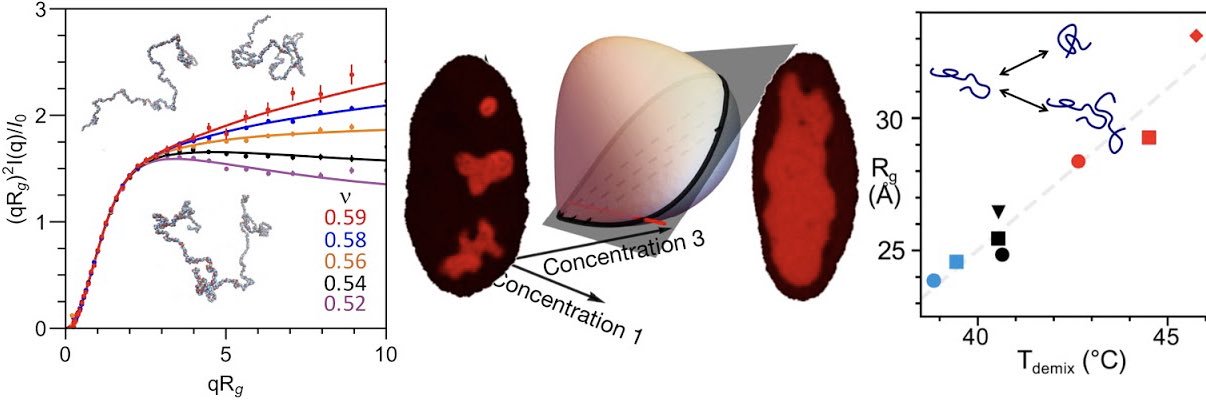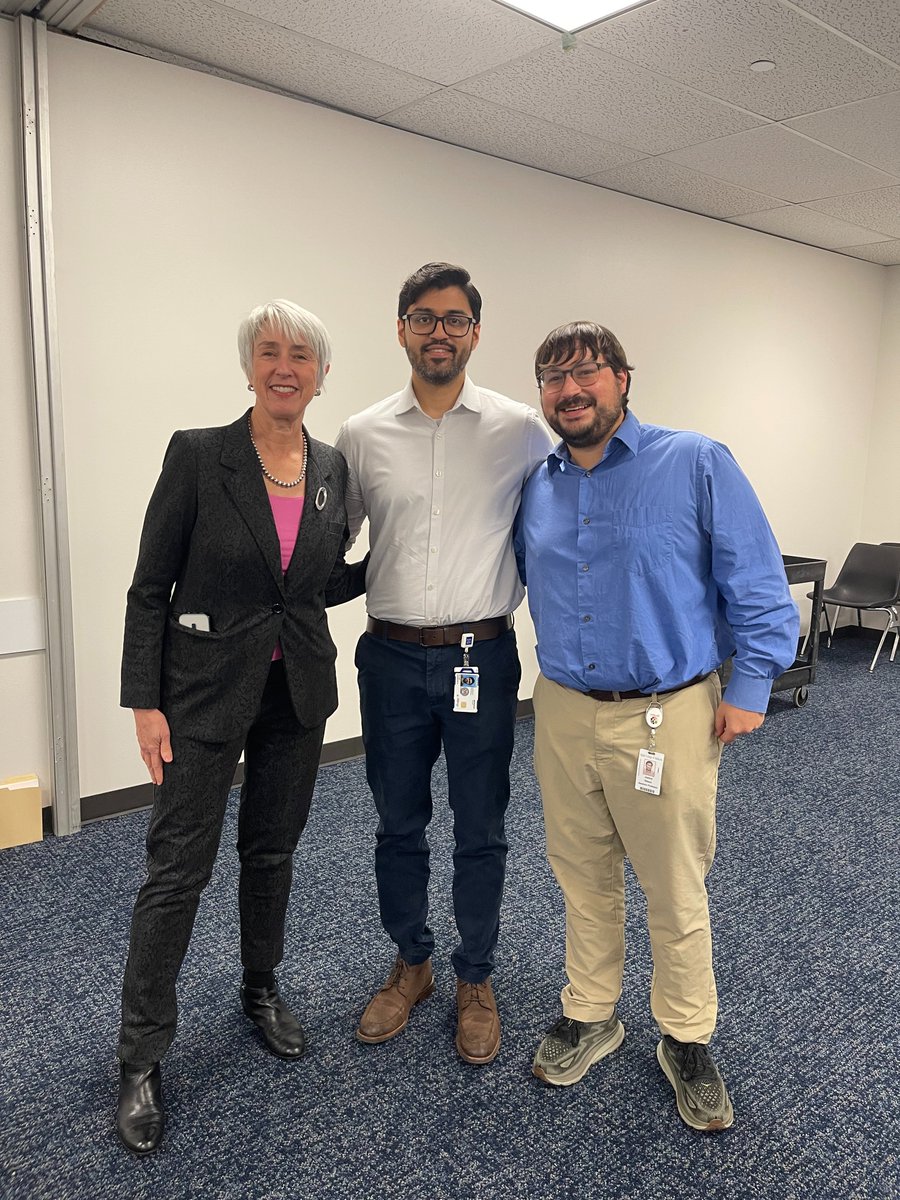
Josh Riback
@SuperSciJew
Assistant professor @BCMHouston. Interested in IDPs, RNPs, and LLPS in cells viewed from biophysical chemistry and polymer biophysics. @RibackLab
In lab's #FIRSTPREPRINT, we present methods to measure nanometer organization around & between specific proteins in condensates. We uncover unexpected heterogeneity for a liquid-like phase with local meshwork spanning 10-50nm, stemming from ribosome biogenesis in the nucleolus.
Nanometer condensate organization in live cells derived from partitioning measurements biorxiv.org/content/10.110… #biorxiv_biophys
Check out @RasmusNorrild's work with Alex Buell @biophysics_dtu and @JosephRogers100 developing and using Condensate Partitioning by mRNA-Display to probe phase separation of ~100.000 sequences, and @SoBuelow simulations to support and analyse the experiments
We are finally ready to share the preprint version about our use of mRNA-display to study what makes disordered proteins form condensates, at the proteome-scale! Check it out here:
Finally sharing new work posted on biorxiv. We find that hydration free energy can serve as a quick and dirty approximation for globular protein partitioning into condensates. We also present a comparison of different hydration free energy methods. biorxiv.org/content/10.110…
If heterochromatin is really a liquid-like condensate, why is it not spherical? We investigated whether mechanical interactions between a condensate and a fiber network can explain the variety of morphologies seen in phase-separated nuclear compartments. biorxiv.org/content/10.110…
Probing condensate microenvironments with a micropeptide killswitch: nature.com/articles/s4158…
New preprint from the lab! With @Brumbaugh_JB, we show that P-bodies sequester developmentally relevant RNAs to influence cell fate. miRNAs direct this conserved regulatory process, and manipulating it enhances totipotency and germ cell programming. biorxiv.org/content/10.110…
Nanometer condensate organization in live cells derived from partitioning measurements biorxiv.org/content/10.110…
1/ Pleased to share our review, published today @NatRevImmunol, highlighting how biomolecular condensates enhance the precision and flexibility of gene regulatory networks that guide fate decisions during normal and pathological immune cell development. nature.com/articles/s4157…
Why are so many proteins hyper-phosphorylated during mitosis? Well, phosphorylation renders individual proteins more soluble & disrupts protein-protein interactions. So global hyper-phosphorylation may 𝐟𝐥𝐮𝐢𝐝𝐢𝐳𝐞 the cytoplasm - to mechanically aide cell division.
Meet the CALVADOS RNA model on bioRxiv or on 🦋
Little big step towards better live cell imaging.
Bye, bye bleaching – hello #abberior LIVE HaloX! HaloX is an exchangeable label that transiently binds to #HaloTag fusion proteins, allowing long-term protein detection during live-cell imaging. Say goodbye to bleaching issues and capture extended imaging periods with ease! Read…
🎉 Thrilled to share the @ribacklab’s first PhD defense! Huge congrats to @Gandhar_Datar and co-advisor @Goodell_Lab ! 🎓🔬 Gandhar’s work in biophysics and leukemia led to the discovery of a new phase-separated condensate that drives leukemias. Stay tuned for more insights!


Excited to release our latest work, led by @almcalvo: arxiv.org/abs/2411.14636! Here, we characterize the rich dynamics of surface-attached "active drops", and develop principles to predict & control their shape and motion (morphodynamics). 💧🦠 Tweetorial follows... [1/6]